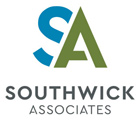Access to quality lands for hunting, fishing and other outdoor recreation is one of the greatest challenges facing sportsmen today. As part of the 2008 Farm Bill, the Voluntary Public Access and Habitat Incentive Program (VPA-HIP) encourages landowners through incentives to open their land to the public for the purpose of recreation—primarily hunting and fishing. The program was originally designed to augment state-run public access programs, many of which suffered in their execution due to insufficient funds. And while there have been some stops and starts to the funding going through, the program is still alive and well, and in fact, recently received an increase thanks in part to Southwick Associates publicizing of the benefits of the program.
How much of an increase?
VPA-HIP funding was increased by 25 percent during the latest round of congressional approvals.
“I like to think our work with the Association of Fish & Wildlife Agencies to document the economic returns of the VPA-HIP helped increase support for its continuation and even lead to an increase in its funding,” says Rob Southwick, president of Southwick Associates. “Funding for the program was actually under the gun at one point before our results were made public.”
How the Program Works
The beauty of the VPA-HIP is that, unlike many federal programs with rigid guidelines that don’t take into consideration regional differences or needs, this one can be tailored to the specific needs of a region or area. Incentives offered to landowners can include lease payments, technical services for habitat enhancement and legal protection against landowner liability, among others. In exchange, the landowners open their lands to public access, providing additional resources for hunters and even anglers to enjoy.
Fifty million dollars were originally authorized for the VPA-HIP program to be paid out over four years (2008-2012). However, funding was delayed until late in the 2010-2012 fiscal years, and then, due to legislative action, was cancelled for the 2012 fiscal year, bringing the program to a premature close. After a hiatus, in 2014-15, grant funds were awarded under the program to 21 states and one tribal nation and has continued since then with new awards.
What Are the Benefits?
As part of their work to review and analyze the outcomes of VPA-HIP, Southwick Associates quantified the economic returns from program investments in 14 states that participated in the program, focusing on acres newly opened over a two-year period (2016 & 2017). Over just those two years, the program enabled 1,100 landowners to enroll more than 1.05 million acres of land and water which hadn’t previously been part of a public access program.
Looking at the highlights of the 2014 awards and their impact at a national level in 2016, we see 676 landowners enrolled more than 608,000 acres of new access. More than 32,000 recreational users benefitted by using these newly opened lands and the investments resulted in more than $32.3 million of economic activity from the additional spending.
In just the next year, another 499 landowners opened an additional 443,000 new acres to the public access program. Twenty-three thousand sportsmen spent more than one hundred thousand days enjoying these enrolled acres and their spending generated more than $16.6 million of economic activity.
Download “Benefits of the Voluntary Public Access and Habitat Incentive Program”
